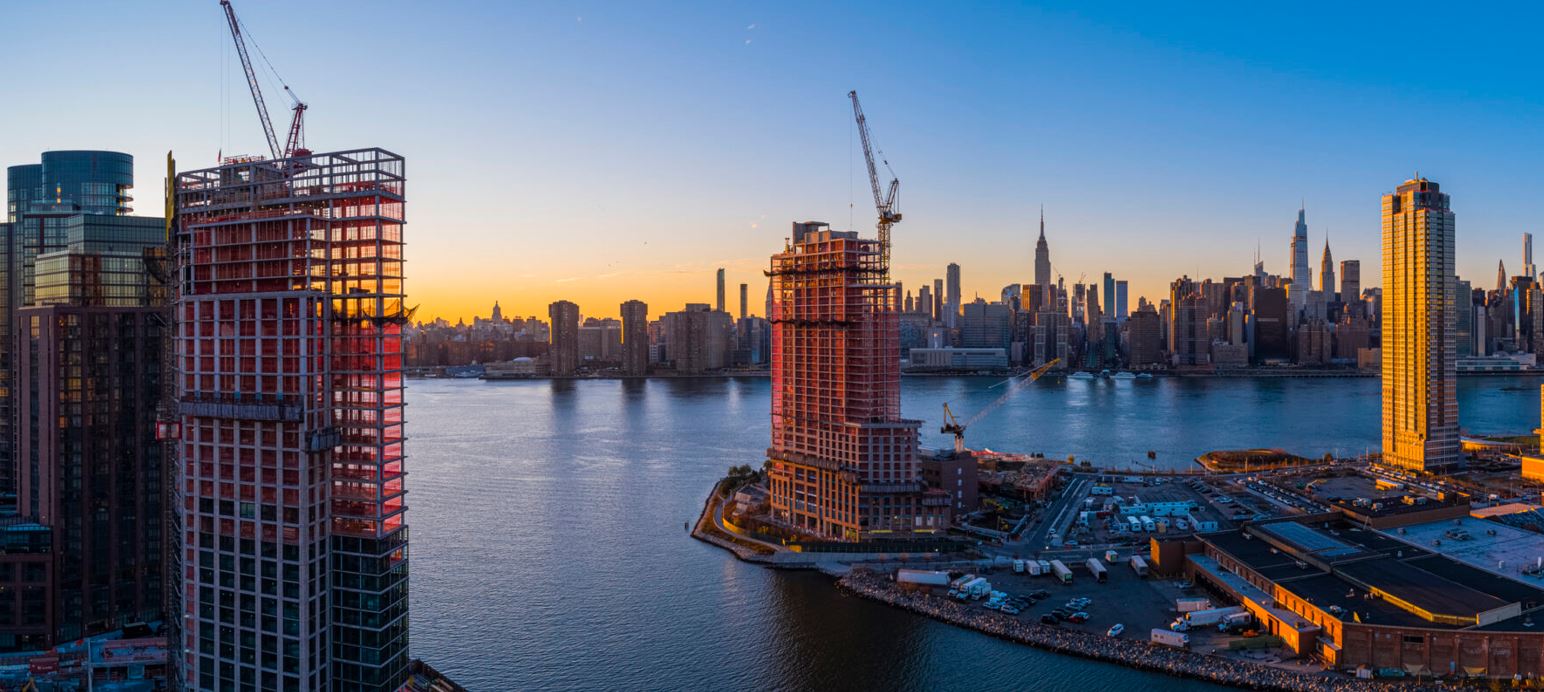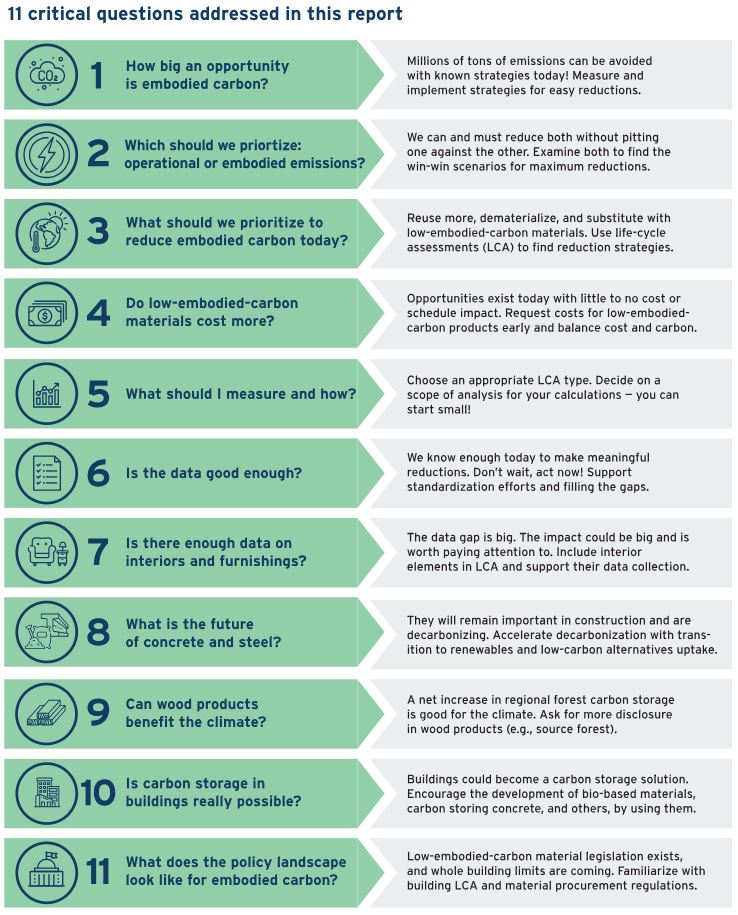Posted by Johann Nacario — September 26, 2023 — Rocky Mountain Institute (RMI) and the U.S. Green Building Council (USGBC) have jointly released the report Driving Action on Embodied Carbon in Buildings to address challenges around reducing embodied carbon emissions and to outline key actions to accelerate the decarbonization of the U.S. building construction sector.

New residential towers’ construction on the waterfront in Brooklyn and Queens, with the scenic view of Manhattan skyline, at sunset. image courtesy of RMI
The two organizations draw from a comprehensive foundation of research based on the most up-to-date and relevant data and industry knowledge. Combined, these insights establish a set of recommendations and actions to better track, measure, and reduce embodied carbon emissions across a building’s lifecycle, including:
- The state of the data on embodied carbon.
- The opportunity to reduce embodied carbon from standard building practices.
- Current and emerging benchmarking standards.
- The carbon intensity of specific materials.
- Embodied carbon savings potential from reuse, recycling, and circularity.
- Assessments of emerging and future low-embodied carbon technologies.
USGBC and RMI’s work will address embodied carbon emissions from building materials and be used to inform the regular development process for LEED v5, the next version of USGBC’s LEED rating system. Updates on LEEDv5 development were shared at the Greenbuild 2023 International Conference + Expo in Washington, D.C. LEED is a premier green building rating system that sets standards for sustainable building design, construction, and operations.
RMI brings deep expertise in embodied carbon to the table through its multi-year Embodied Carbon Initiative and is collaborating with USGBC to ensure that the approaches taken have as much impact as possible across the real estate industry.
Victor Olgyay, a carbon-free buildings expert at RMI, stated:
RMI is excited to work together with USGBC, providing relevant, cutting-edge research and information on reducing embodied carbon emissions as the rating system continues to push the building industry to be part of the climate solution by providing tangible approaches to achieve high-performance projects that are good for business and the planet.
Melissa Baker, senior vice president at USGBC, remarked:
Addressing embodied carbon emissions in the building and construction sector is a challenge that will require an industry-wide approach and working with leading institutions like RMI. Our work together aims to provide recommendations and key takeaways to inform standard practices that will help us meet our global climate goals.
The buildings and construction sector account for nearly 40% of all greenhouse gas (GHG) emissions globally. Embodied carbon emissions alone are 11% of GHG emissions, representing millions of tons of carbon released during the lifecycle of building materials, including extraction, manufacturing, transport, construction and disposal.
As this critical area of high-performance building design comes into focus for more architects, designers and builders, the collaboration between USGBC and RMI will guide best practices in low-embodied carbon solutions while fostering rapid uptake and better decision-making informed by the latest research.
Readers may download the Driving Action on Embodied Carbon in Buildings report at RMI.






